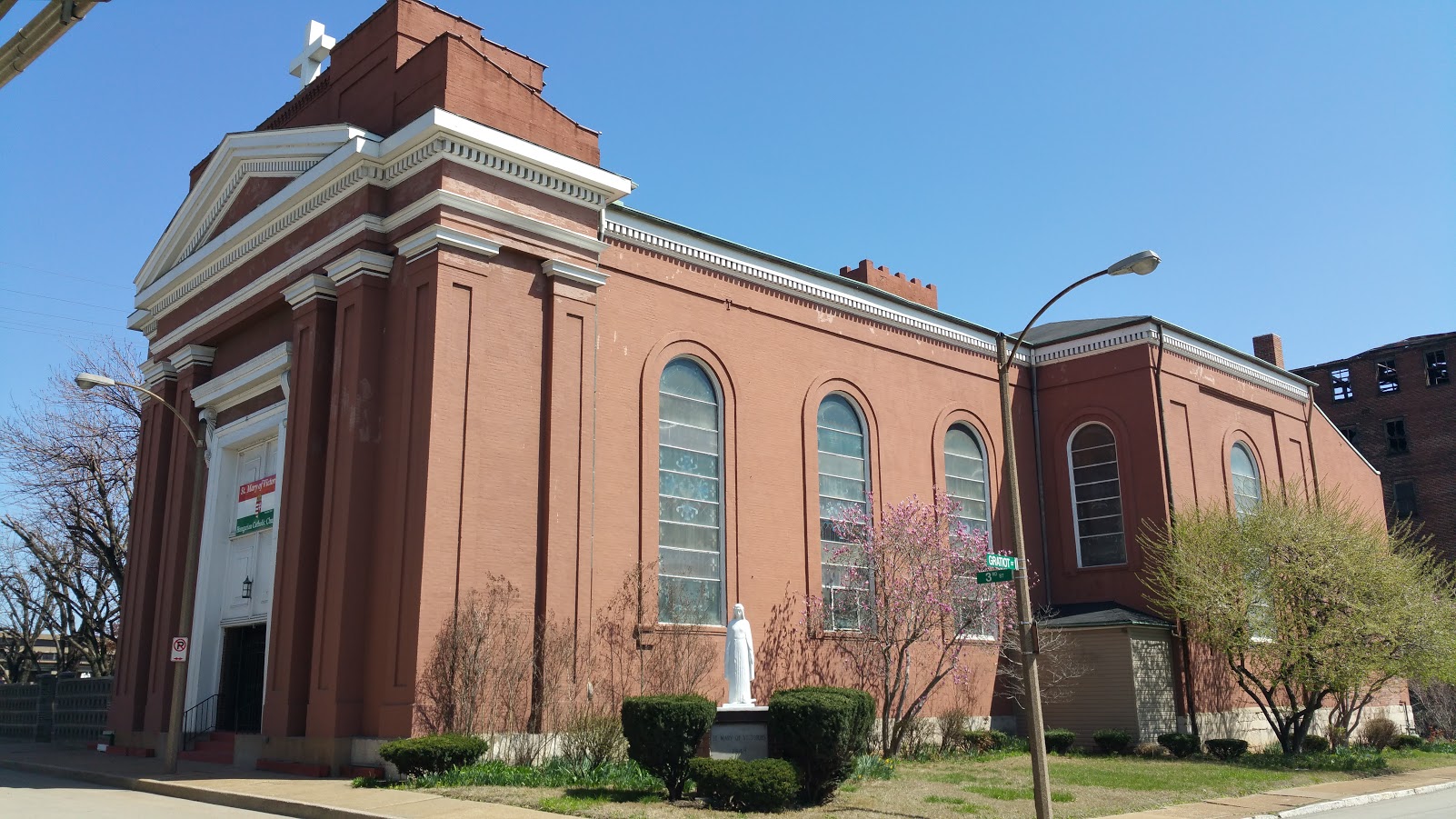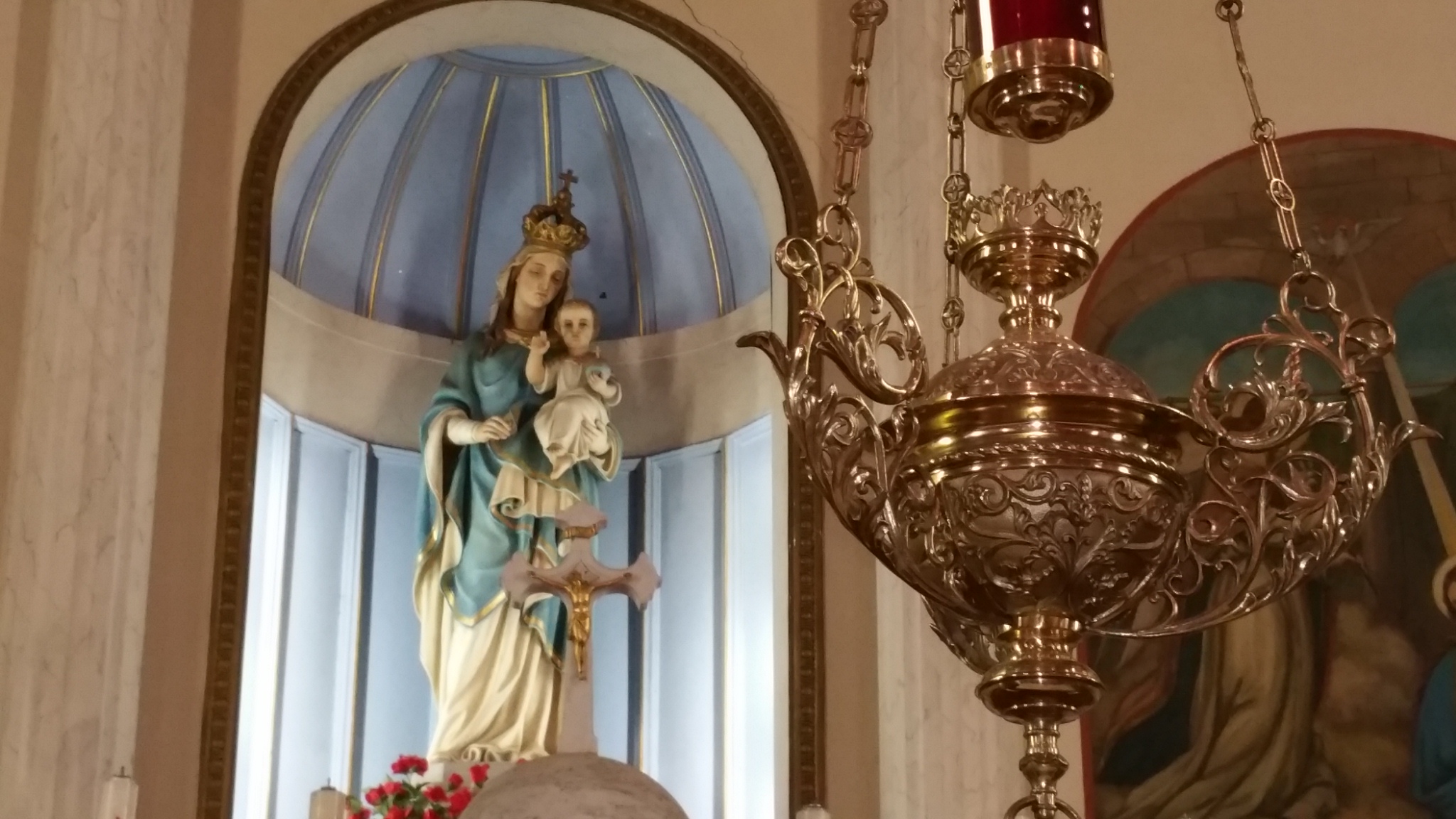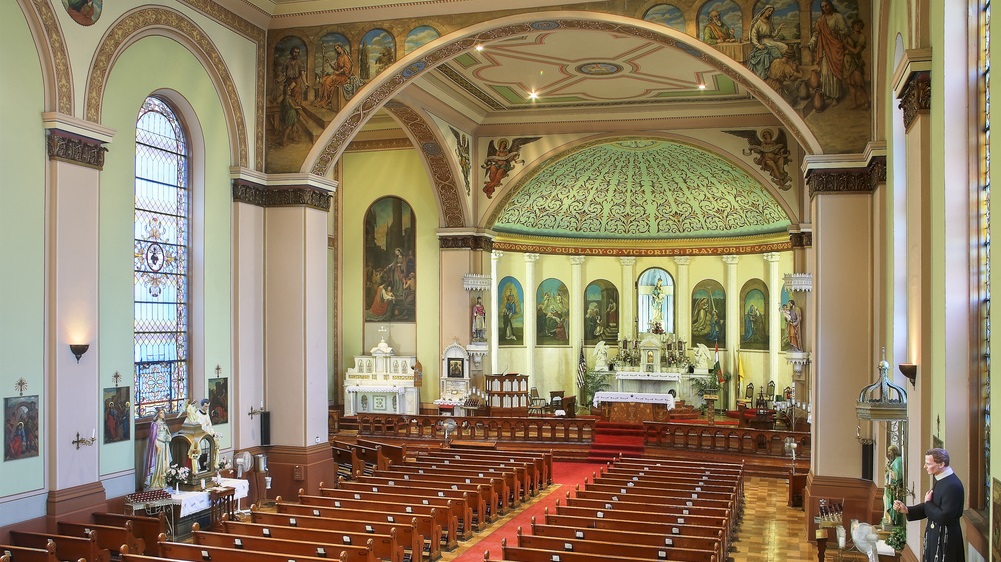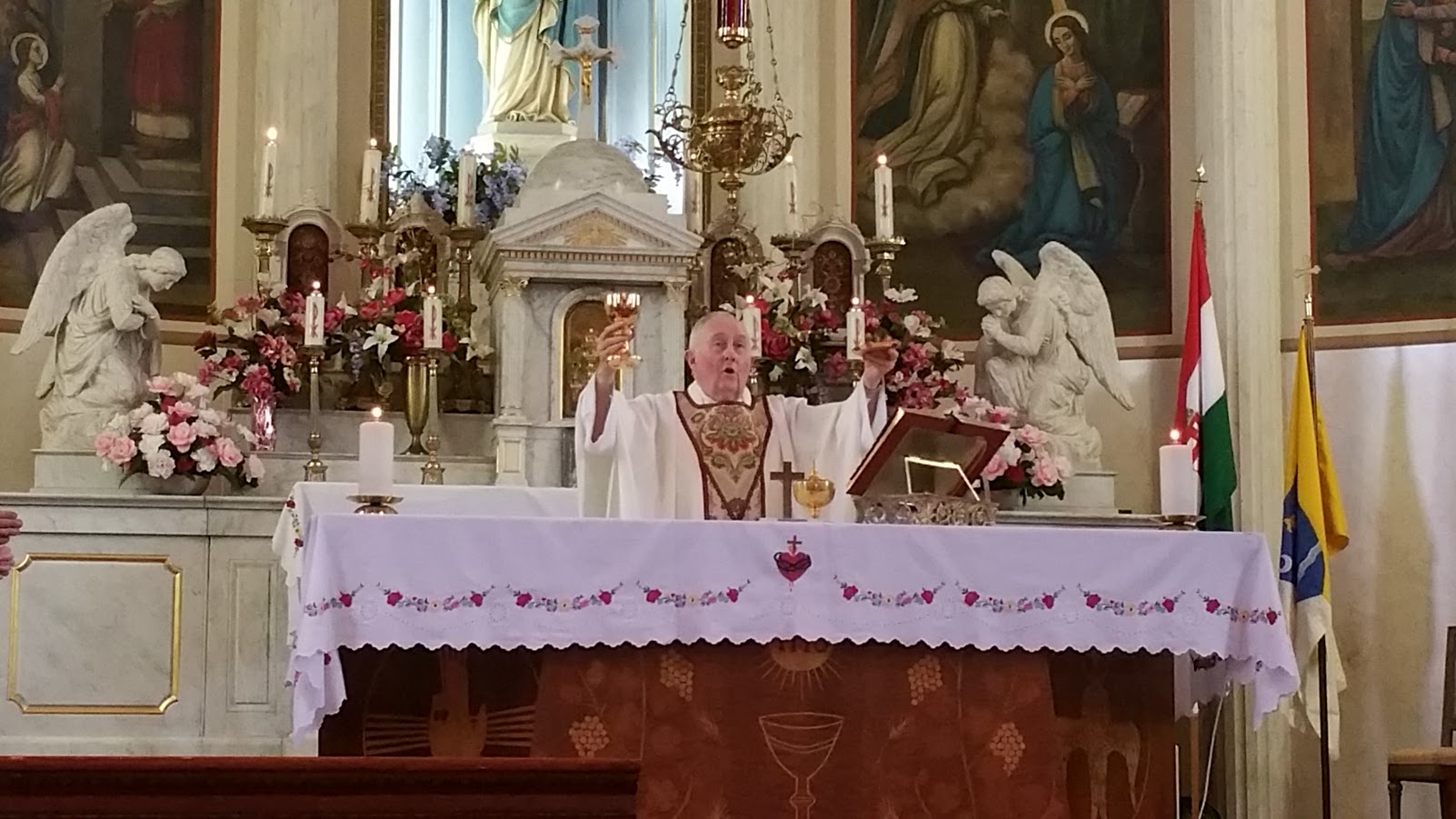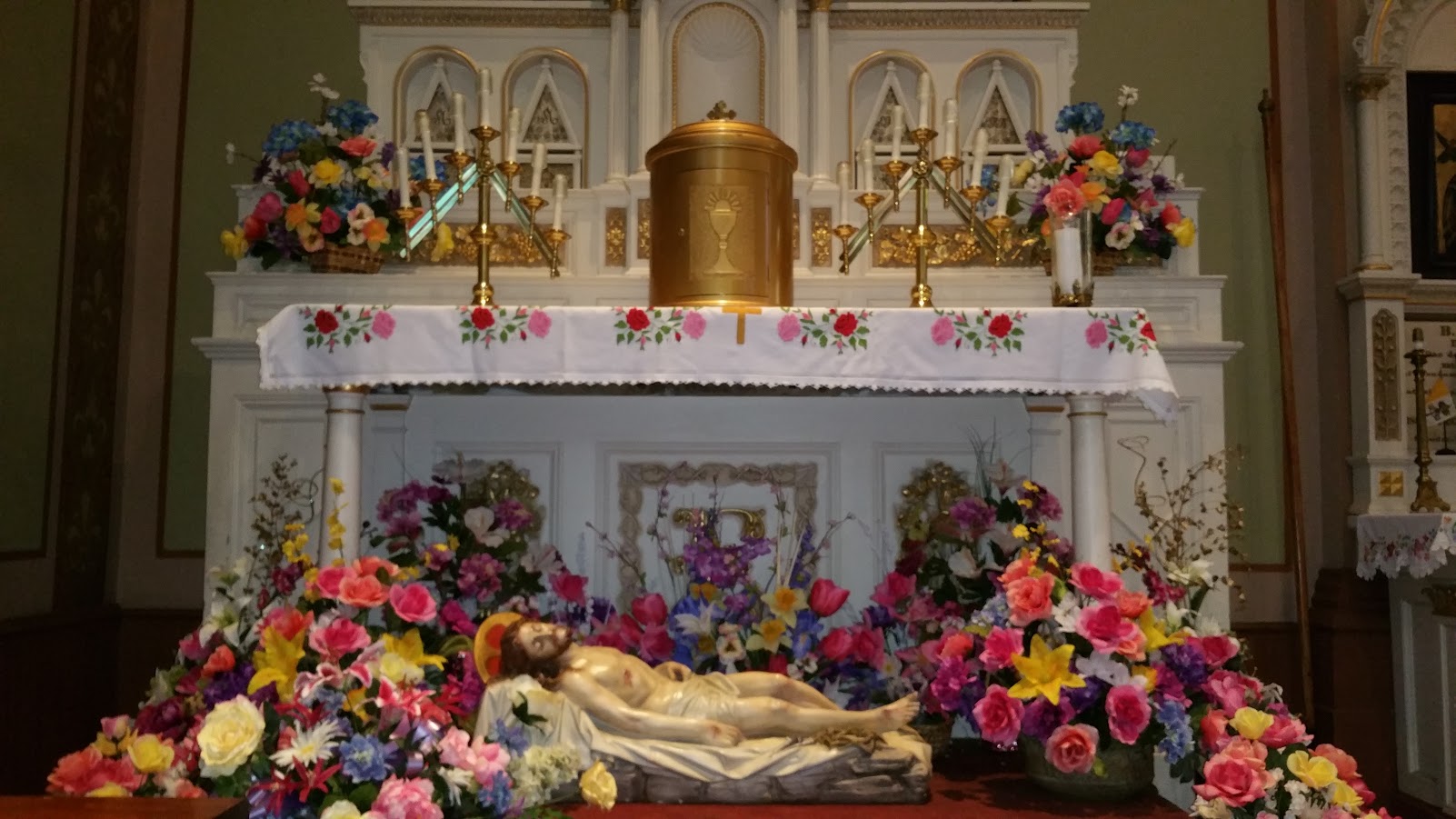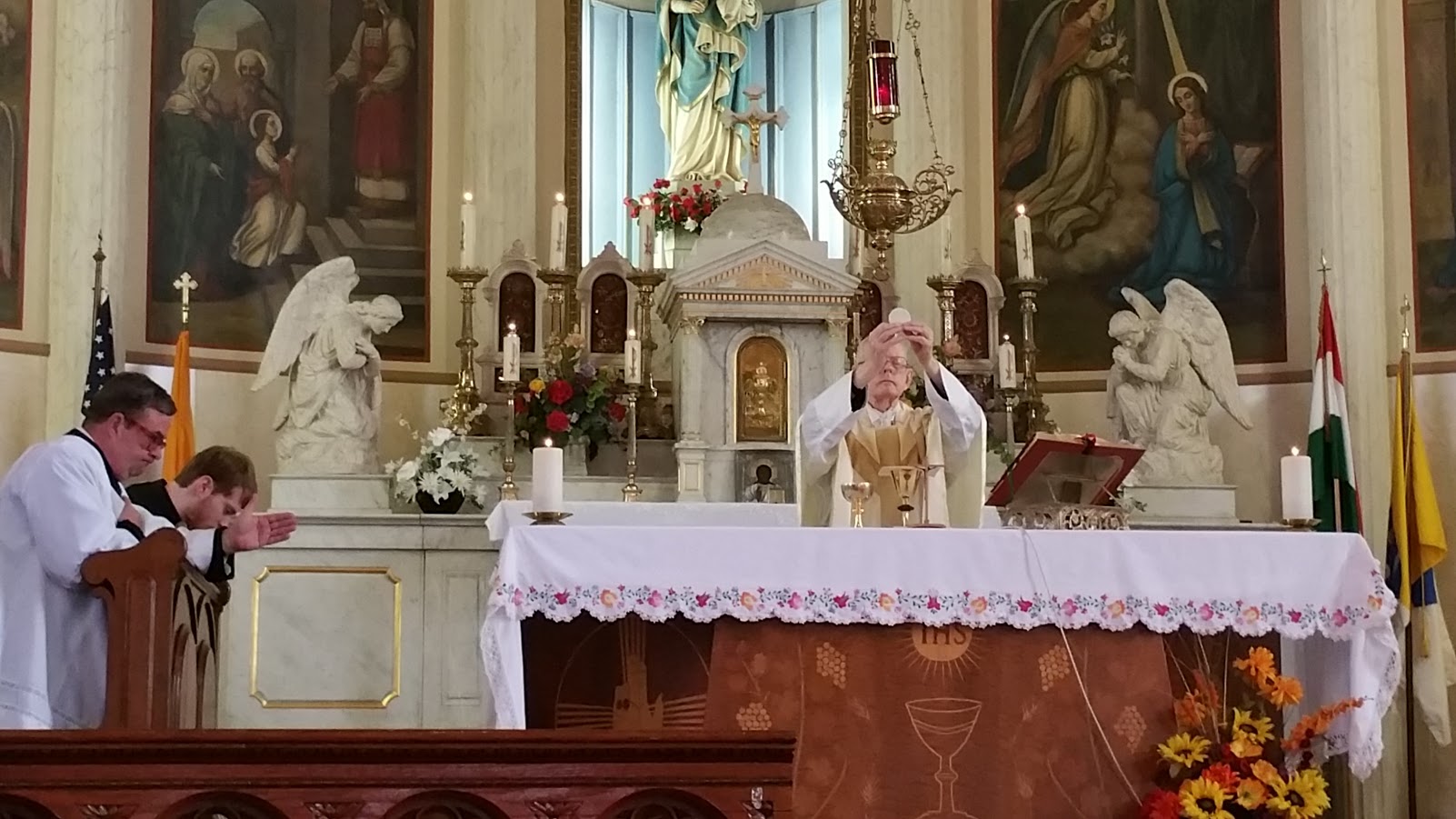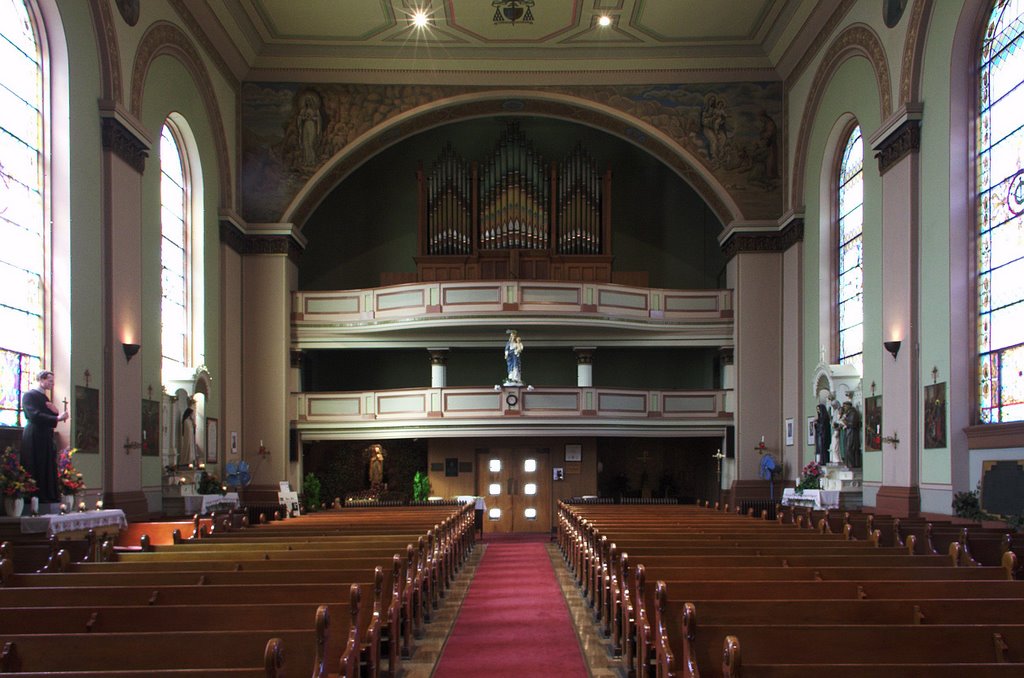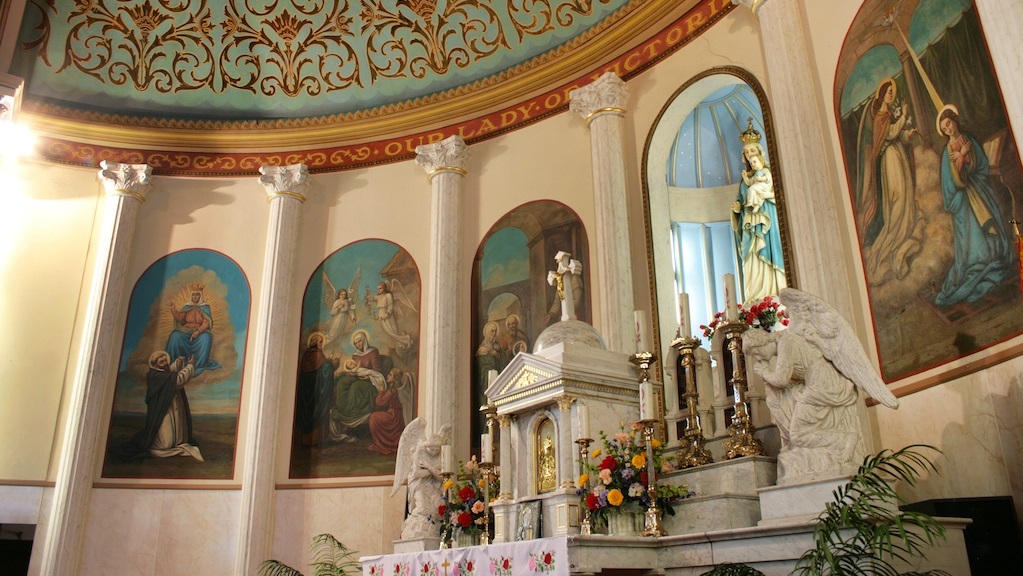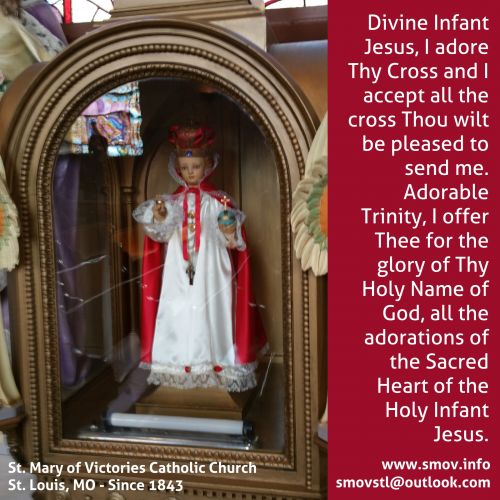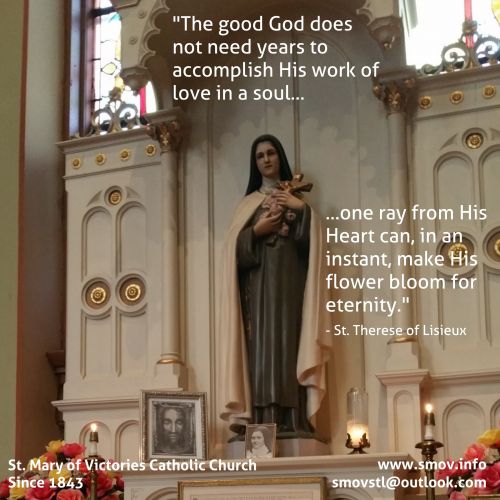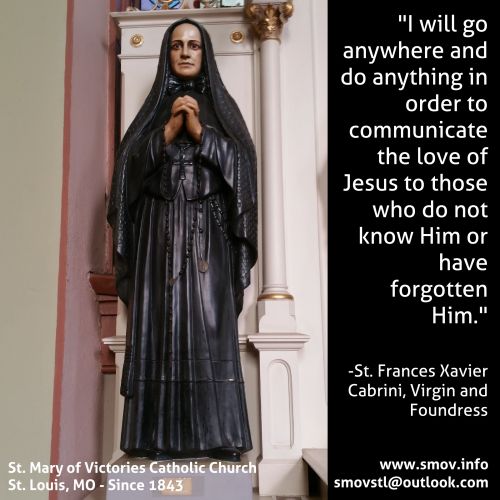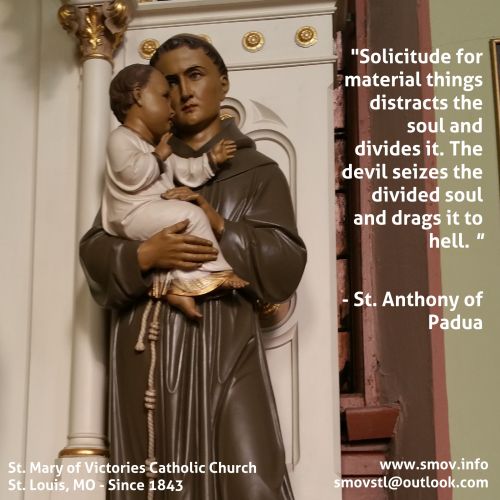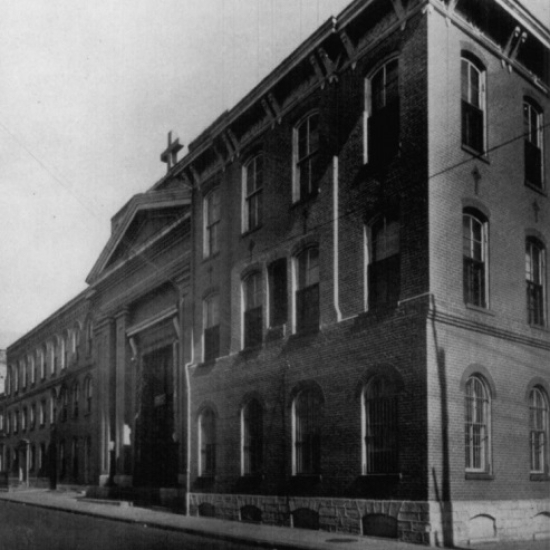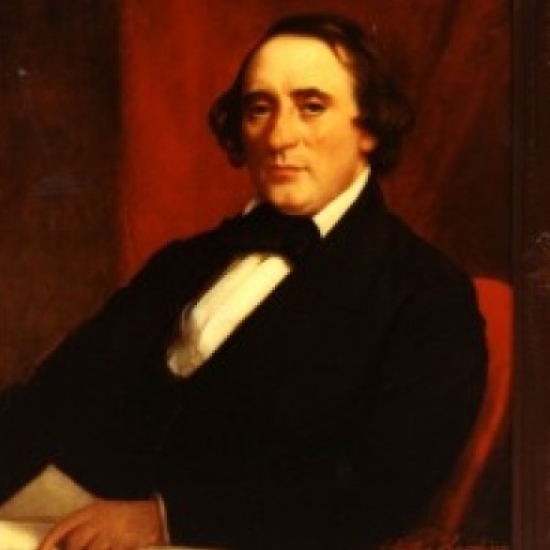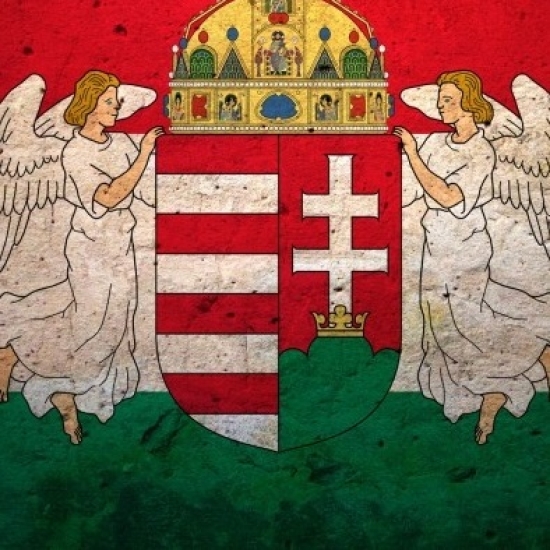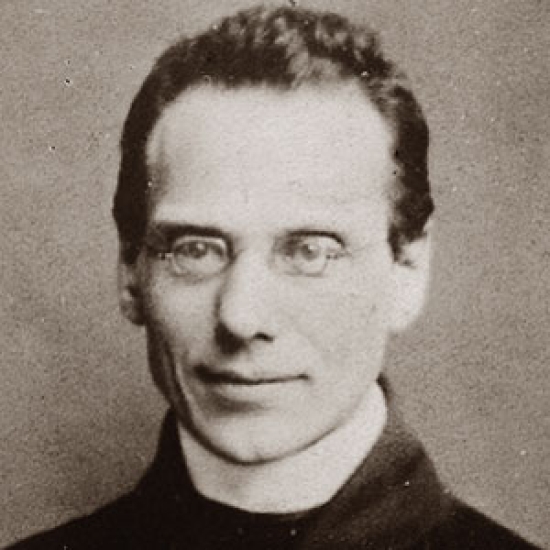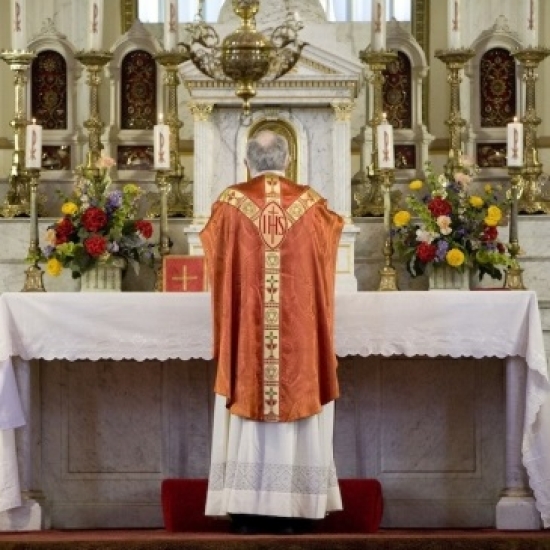2 October 2016, 27th Sunday in Ordinary Time (Year C)
Introit: In voluntate tua
Offertory: O Thou the Son of God most high, p. 302
Communion: In salutare tuo
Recessional: O glorious Maid, exalted far, p. 258
Mass XI, PBC p. 58. Credo III, PBC p. 77
The Introit antiphon is in four phrases, the third of which is subdivided:
1. In voluntate tua, Domine, universa sunt posita,
2. et non est qui possit resistere voluntati tuae:
3. (a) tu enim fecisti omnia,
(b) caelum et terram, et universa quae caeli ambitu continentur:
4. Dominus universorum tu es.
A melody of calm, steady movement with no drama and clear cadences. The piece moves below the dominant of the fourth mode, below a, almost throughout. (Only at the verse does the dominant dominate.) But this, in turn, necessitates a lower pitch for the antiphon, leaving a sense of gravity. This chant wished to sing of nothing but repose, reminding us of the sea which, although it can rage and foam and toss, today is calm and placid, hardly disturbed by a ripple. The first phrase really has f for its dominant, like the Introits for the second Sunday of Lent, for Easter, and for the Third Sunday of Easter.
The first phrase confines itself to a third. Very slowly the melody begins to increase. The range of the first phrase is c-g, of the second d-a, of the third and fourth c-a; there is, therefore, some development in the melody. The accented syllables with few exceptions carry a podatus or an expansion of the podatus. But there are various degrees of accentuation, according as the first note of the podatus is of the same pitch as the preceding one (voluntati in the second phrase,), a second lower (voluntate tua in the first phrase,), a second higher (the first universa), or a third higher (the second universa). Here, as in possit, the podatus encompasses a third. Non is still more strongly accented. No one can long resist the divine will. When the Lord will come at the last day for the universe judgment, then this non will receive an absolute value; no longer will anyone dare to offer any resistance. Such thoughts are suggested by the liturgical year which is now coming to a close, and the emphasis on the Lord’s coming again is renewed.
The ascending fourth d-g over non is balanced by the descending u-e over possit. Variation in the melody is secured by this e; any other interval would tire. The second phrase begins on the low d and is joined with the preceding by means of the ascending e f. In the third phrase, omnia and ambitu have a similar ring; caelum et terra and universa are practically identical, for they express related thoughts. In the rendition these passages must follow rapidly one upon another with a strong, though not exaggerated, emphasis on the word-accent. The formula at the end of continentur always stands over the final syllable of a word (compare omnibus in the Introit for the second Sunday in Lent; and Israel, mihi, sibi in the Tract for Passion Sunday, where the formula is still more developed). Special solemnity should characterize the final phrase with its reverent close: Dominus universorum tu es. But the tempo must be not too slow. Strangely enough, the climacus repeats the same notes, g f e, while similar passages, for example, the ending of the Introit for the second Sunday of Lent, have the much more pleasing formula a g f gfee.
The Communion antiphon is in three phrases, the third of which is subdivided.
1. In salutari tuo anima mea, et in verbum tuum speravi:
2. quando facies de persequentibus me judicium
3. (a) iniqui persecuti sunt me,
(b) adjuva me, Domine Deus meus.
Yet again we hear from the great Psalm 118. But here the melody is more emotive, despite its simplicity and quick and abrupt movements. The soul that trusts in the power of God's word longs for Him to be a strong defender against persecution and oppression. After the quiet first phrase, one would hardly suspect that a storm, such as the second and third phrases speak of, can still disturb the soul. The inception on the dominant a over quando and the tarrying on this note are like an urgent knocking at the door of mercy. How often have we made this quando, "when"—"when, O Lord, will our deliverance come?"—as a fervent plea! We have here an instance in which an extremely common form, the recitation on a single note, becomes the means of powerful expression, for all the other words of this text touch the dominant only transiently, while over quando it receives particular stress.
In first half of the climactic third phrase we find the psalm tone proper to Mode 1 Introit verses. And it is here that the piece reaches its climax. It seems that the similar closes of the phrases over speravi, judicium, and meus are to breathe calm into the turbulent soul. The quilisma over (judi)-ci-(um) is very striking. We are making this a Communion song; for now the "salvation of God" is come to us, and we may place all our trust in the incarnate Word of God now dwelling within us. No matter how long the time of probation and trial, how numerous or unjust our aggressors may be, the Lord will come on His great day to judge them all.
